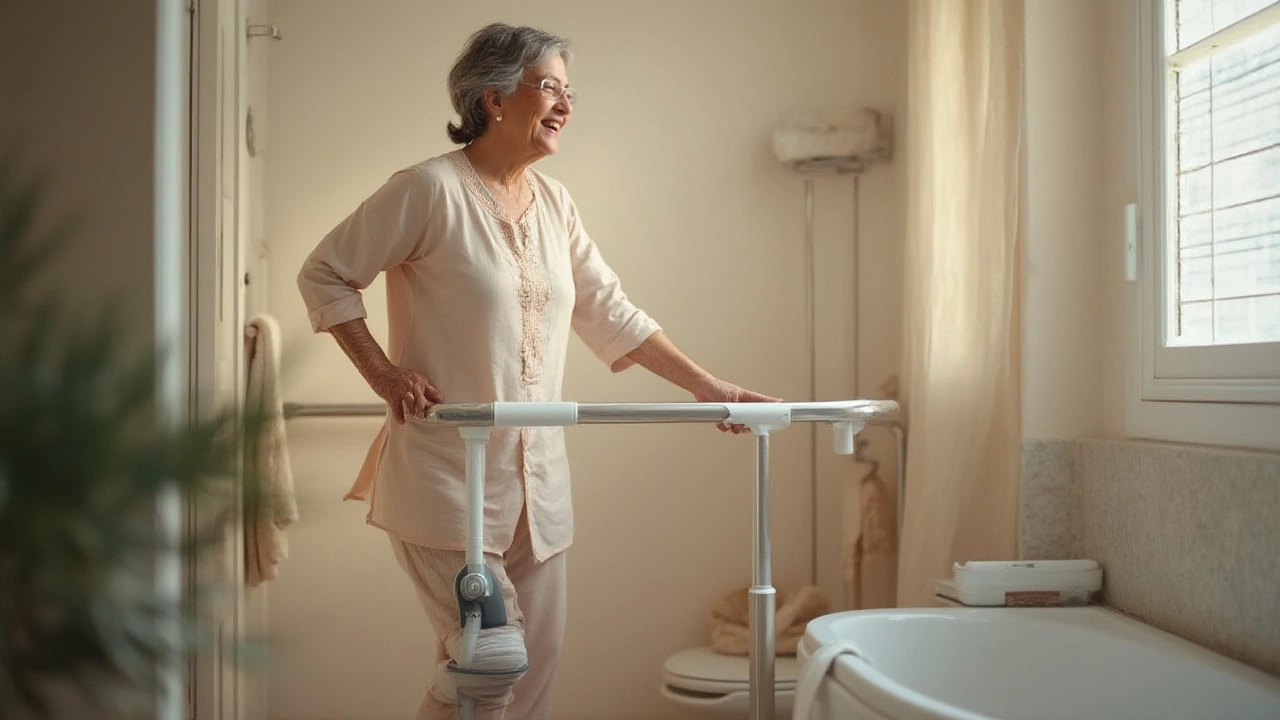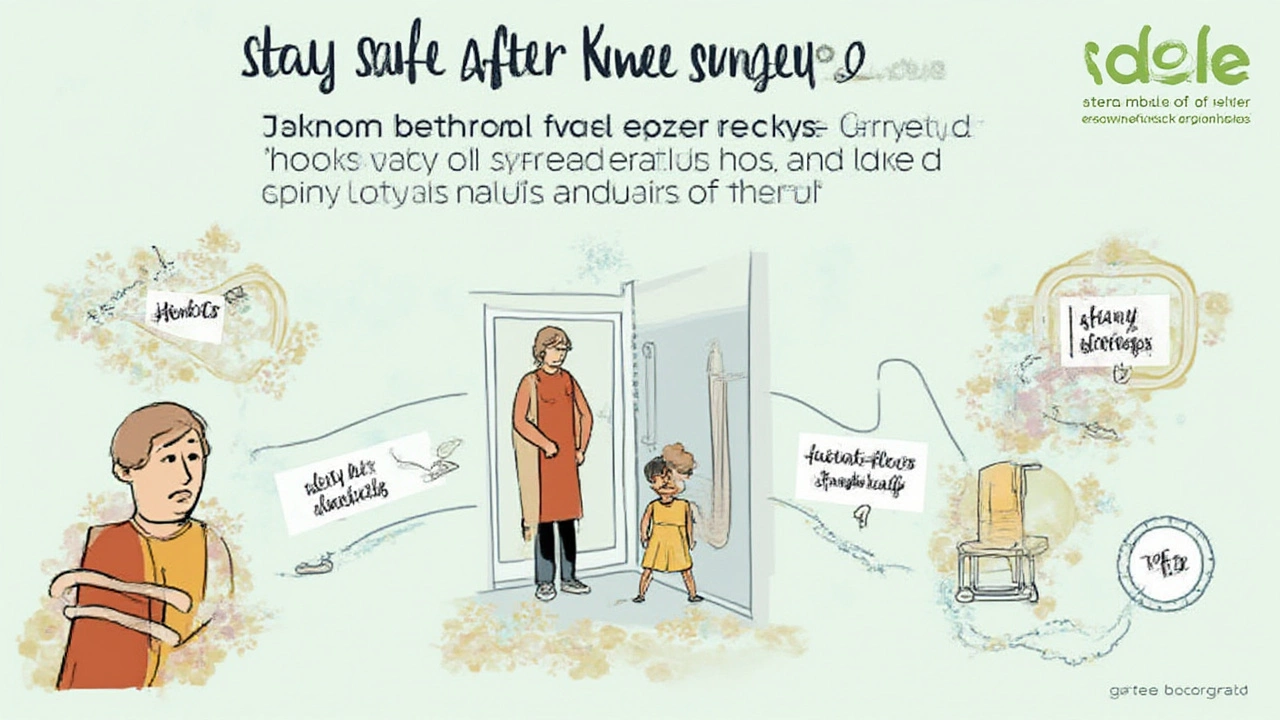
If you’ve just had knee surgery, or you’re about to go under the knife, there’s probably one awkward question on your mind that no one seems to answer straight: can I use the bathroom by myself? I remember when my mom had her knee replacement; she worried more about making it to the loo than the hospital bill. And who can blame her? The idea of needing help for even the most basic things—like using the toilet—can be frustrating, even frightening.
People imagine they’ll be helpless for weeks, but the truth isn’t nearly as doom-and-gloom as the warnings. On day one, walking to the bathroom feels like climbing Nandi Hills on crutches. But with a bit of planning (and a dash of humility), you’ll be surprised at what you can manage.
Your First Trips: What To Expect After Knee Surgery
The truth: most folks can’t just hop off the surgical table and waltz to the loo. Right after knee surgery—especially if it’s a major thing like a total knee replacement—you’re groggy, on painkillers, your leg is wrapped tighter than mummy’s dhokla dough. Nurses or hospital staff will help you the first couple of times. In fact, in many hospitals in Bangalore, nurses almost insist on escorting you for at least the first 24 hours. If you’ve got an epidural or spinal anaesthesia, your leg may feel like jelly, making it risky to stand alone.
But after those first 24-48 hours, as the anaesthesia fades and physical therapists get involved, they want you up and about—gingerly, of course. Evidence from a study in the Indian Journal of Orthopaedics (2020) shows that 65% of knee surgery patients were able to walk (with a walker) to the bathroom within 48 hours post-op. That’s pretty encouraging, right?
Still, be honest with yourself. Even if you’re burning to be independent, safety comes first. Slipping in the bathroom is no one’s idea of a good time. Get help if you feel shaky. Many patients find it easier to use a commode chair at first, especially at night or if your bathroom requires navigating stairs or tight spaces.
Getting Set Up: How To Make Your Bathroom Safe & Accessible
If you have knee problems, you probably already know how tricky Indian bathrooms can be. Wet floors, awkwardly placed buckets, and sometimes none of those fancy Western commodes our Amerikawala cousins brag about! Yet, with a little preparation, you can make things much safer for yourself.
Here’s the trick: think like a home safety auditor. Buy a sturdy shower chair or a commode chair before the surgery. If you have a Western-style toilet, add a raised seat attachment. These are available on Amazon and at most medical stores in Bangalore neighborhoods like Jayanagar or Koramangala. This makes sitting and standing easier, so you won’t be putting too much strain on your healing knee.
- Install grab bars near the toilet and in the shower area.
- Make sure the floor is dry and free from slippery mats.
- Keep everything you may need within easy reach—think tissue roll, hand sanitizer, wipes.
- Use a night light for those 2 AM bathroom sprints. No heroics in the dark, please!
If stairs are an issue and your bathroom is not on the same floor as your bedroom, set up a commode next to your bed—seriously. I know it doesn’t feel very glamorous, but it beats falling down the stairs. And if modesty is on your mind, remember that almost everyone goes through a phase of needing help; it won’t last forever.

Physical Recovery Timeline: When Can You Manage By Yourself?
The timeline depends on what type of knee surgery you had. Arthroscopy? You might be managing solo in a day or two. Total knee replacement? Give yourself a week or two for most things, but be prepared for a gradual process. According to Dr. Shashank Shetty, a Bangalore-based orthopedic surgeon, “Most patients can attempt independent bathroom visits within 48-72 hours post-surgery, provided they use a walker or crutches and have proper support at home.”
Check out this table showing typical recovery progression:
| Days Since Surgery | Usual Bathroom Mobility |
|---|---|
| 0-1 | Assisted only; likely bedpan or commode |
| 2-3 | Short assisted walks with walker to bathroom |
| 4-7 | Independent bathroom visit with walker/crutches, if steady |
| 8+ | Gradual independence; may not need support with simple tasks |
Recovery isn’t a straight line, though. If you’re older or if you had existing mobility issues, take it slow. I’ve seen my aunt, a spirited 65-year-old in Hebbal, bounce back in three days, but my neighbor’s father took nearly two weeks before he was comfortable without help. Listen to your body and follow your doctor’s advice to the letter.
Real-Life Tips: Making Bathroom Trips Safer And Simpler
Nothing prepares you for the dance of dignity and discomfort that comes with bathroom visits post-surgery. But hey, there are clever ways to handle it. Practice using a walker or crutches before surgery so you don’t feel awkward when it counts.
- Always wear shoes with anti-slip soles, even in the bathroom. No slippers with slick bottoms—trust me, my cousin ended up with a nasty bruise that way.
- Put a chair right outside the bathroom door. If you get tired, you have a place to rest immediately.
- If you have a family member with you—like my Vihaan, who tried to act helpful by bringing me the TV remote instead of the support handle—get them to run a real-time test. Let them know where things are and how to offer help without making it awkward for either of you.
- Don’t hesitate to use adult wet wipes or portable bidet sprays—these are hygienic and reduce awkward reaching.
Remember to keep your follow-up appointments and ask your physiotherapist for tips specific to your home setup. Everybody’s recovery is a little different—what works for your best friend may not work for you.

Mental Hurdles: Accepting Help and Regaining Your Independence
I’ll be honest—no one enjoys asking for bathroom help. It’s hard on your pride. But the reality is, for a few days, it’s just part of the deal. If you’re a mom like me, used to running after kids, it can feel like a huge loss of self-sufficiency. But lean on your circle, whether it’s family, friends or even that chirpy home nurse who seems to remember everyone’s birthday. And keep in mind: needing help right now doesn’t mean you’re losing your independence forever. Most people can resume bathroom visits without any help after a week or two, and you’ll eventually be back to your usual self, chasing after Anika because she left her muddy sandals in the living room (again!).
Focus on your progress instead of what you can’t do. Every small win—getting to the bathroom without help, standing up using only the grab bar, not needing to call out for assistance—is a step back to your independent life. Shower yourself (pun intended) with some patience and give your body credit for healing the way it’s supposed to. Don’t let a few awkward days define your whole recovery. And please, keep your phone nearby in the bathroom in case you need to call for help—you don’t want to be stuck staging a dramatic soap opera scene alone!
So yes, you can absolutely go to the bathroom by yourself after knee surgery—with a bit of support, preparation, and patience. Don’t be shy about seeking help at first, and trust that independence returns much faster than you might fear. You’ve got this!

Write a comment